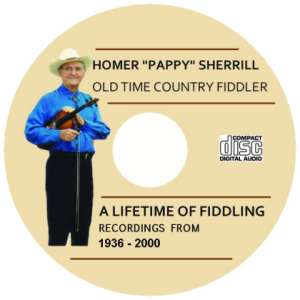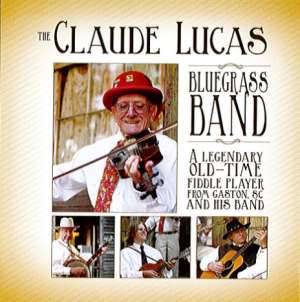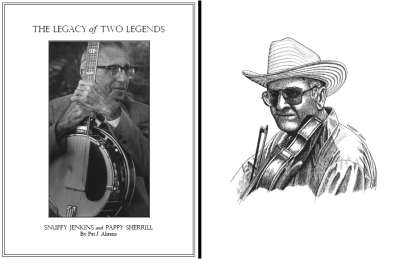







ABOUT THIS SITE This web site is intended to be an online resource to preserve South Carolina's fiddling traditions. I was invited in the fall of 2012 by the University of South Carolina to be a guest lecturer to present a class on traditional fiddling in South Carolina, and I thought it would be useful to provide an online resource that folklore students, fiddlers, historians, and others could use. This site, which grew out of material I've gathered over the past 30+ years, will hopefully be a helpful resource for those interested in exploring fiddling in South Carolina. Information and music will be continually added to the site as it is gathered and processed. Hundreds of tapes of field recordings are currently being digitized, and some of these recordings will be made available online. When I was in my early 20s and learning to play the fiddle, I was fortunate enough to be able to find some older fiddlers who lived in my area. These fiddlers, ranging in age from their 50s to their 70s, freely shared their tunes and knowledge with me. I would record their tunes so that I could attempt to learn them. These guys are all gone now, but I am fortunate to have their musical legacy on tape. Most of their families have also shared their collections of tapes, records, and videos with me, when such material existed. Back in those early days in Lexington County, South Carolina, when I began playing fiddle tunes around folks, it seemed that many families had an old fiddle that belonged to their grandpa or uncle or somebody from a generation or two before. "Grandpa played the fiddle" was something that I often heard. The sad news is that these early fiddlers were rarely recorded, and for the most part, their tunes died with them. Luckily a few families kept old reel-to-reel or cassette tapes of their late fiddling family members, and they are usually quite glad to share them and see these recordings preserved for the future. Hopefully aspiring fiddlers will be able to learn some tunes from the resources on this site and carry on a musical tradition that has been going on since the 1700s. Visit the FIDDLERS page to learn more about fiddlers in our state. Visit the ARCHIVES to listen to recordings. Visit the BUY page to purchase CDs that are available of South Carolina's fiddlers. If you know of any home recordings of fiddlers from generations past, and you would like to have this music preserved for future generations, please contact me by clicking on the "Contact Us" link at the top of this page. Ashley Carder January 2013 A BRIEF HISTORY OF TRADITIONAL FIDDLING IN SOUTH CAROLINA, AS I SEE IT One of the first questions that I hear from those unfamiliar with traditional fiddling is, "What is the difference between a fiddle and a violin?". The answer is that they are the same instrument. Those who play it in the folk tradition typically call it a fiddle. Those who are classically trained call it a violin. Violinists read music. Fiddlers typically play by ear, although many modern fiddlers also read music. Fiddling was brought to the USA by the early settlers, who brought their fiddles with them from the old country. The fiddle was small and easily transported across the oceans and across the country once the settlers were here. In the old days, fiddlers learned from other fiddlers. Many of the old tunes had been handed down from one generation to the next for years. Fiddlers were in demand at social gatherings, barn raisings, wakes, and any occasion where people gathered and wanted to be entertained. Fiddle contests in the southeastern US date back to the 1700s. Among notable early fiddlers were Thomas Jefferson and Davy Crockett. Andrew Jackson frequently had fiddlers at the White House. Lewis and Clark had at least three fiddlers on their expedition. Plantation owners had their slaves learn fiddling so they could play for dances. The early fiddler usually played solo, but in the late 1800s, the banjo and the guitar were starting to be used to accompany fiddle music. This brought about the development of string band music. More cultural exchange occurred in the late 1800s with the expansion of the railroad and textile industry in the Carolinas. Fiddle tune swapping occurred in the mill villages, which had an influx of people from the mountains and piedmont regions. Local community square dances led by fiddlers were common. From the 1880s through the 1930s, southern rural entertainers, including fiddlers, traveled the Vaudeville circuit and were also incorporated in medicine shows as part of their traveling caravan peddling "miracle cures". Fiddlers refined their techniques, and added trick fiddling, such as fiddling between their legs, behind their back, on top of their head, etc. The 1920s brought about commercialization of rural music, both through phonograph records and radio. Fiddlers could now learn tunes from records or by hearing tunes played over the airwaves. They no longer had to rely on the repertoire of the older local fiddlers. Radio stations in the Carolinas regularly featured rural country musicians, including fiddlers, on stations such as WIS in Columbia, WSPA in Spartanburg, and WFBC in Greenville. Fiddlers such as Homer Sherrill, Sam Poplin, and Bob Smith earned a living playing their fiddles on WIS radio in the 1930s and 1940s. The advent of more commercialized country and bluegrass music in the late 1940s and early 1950s brought about a change in fiddling styles. Although bluegrass fiddling is rooted in the old time traditions, the bluegrass fiddler would add more fancy bowing, long bow techniques, and jazzy and bluesy licks. Over the next few decades starting in the 1940s, the old time fiddlers would more or less disappear from the scene in South Carolina. The old fiddlers who learned tunes from the old local guys before them, and played their fiddles at home in the evening died out. In their place was a new generation playing guitars, trying to sound like Elvis or The Beatles. The fiddlers who remained mostly played in the commercialized country music style or bluegrass style. A few, such as Bo Norris of Ward, still played the old fiddle tunes that he learned back in the 1920s from older fiddlers in his community like "Old Man Jim Edwards" or "Old Jim Gregory". Today you can still find traditional old time and bluegrass fiddling at old time music and bluegrass festivals, and at local gathering places like Bill's Picking Parlor in West Columbia on Friday nights, The Cool Beans Coffee Shop Old Time Jam in Columbia on the 2nd and 4th Thursdays each month, and at the Haynes 4th Saturday Bluegrass concerts and jam at the Haynes Auditorium in Batesburg-Leesville. If you want to experience fiddling, there is no better way than to do it LIVE! Go forth and find the fiddlers and musicians and immerse yourself in the music! | |||||||||||


